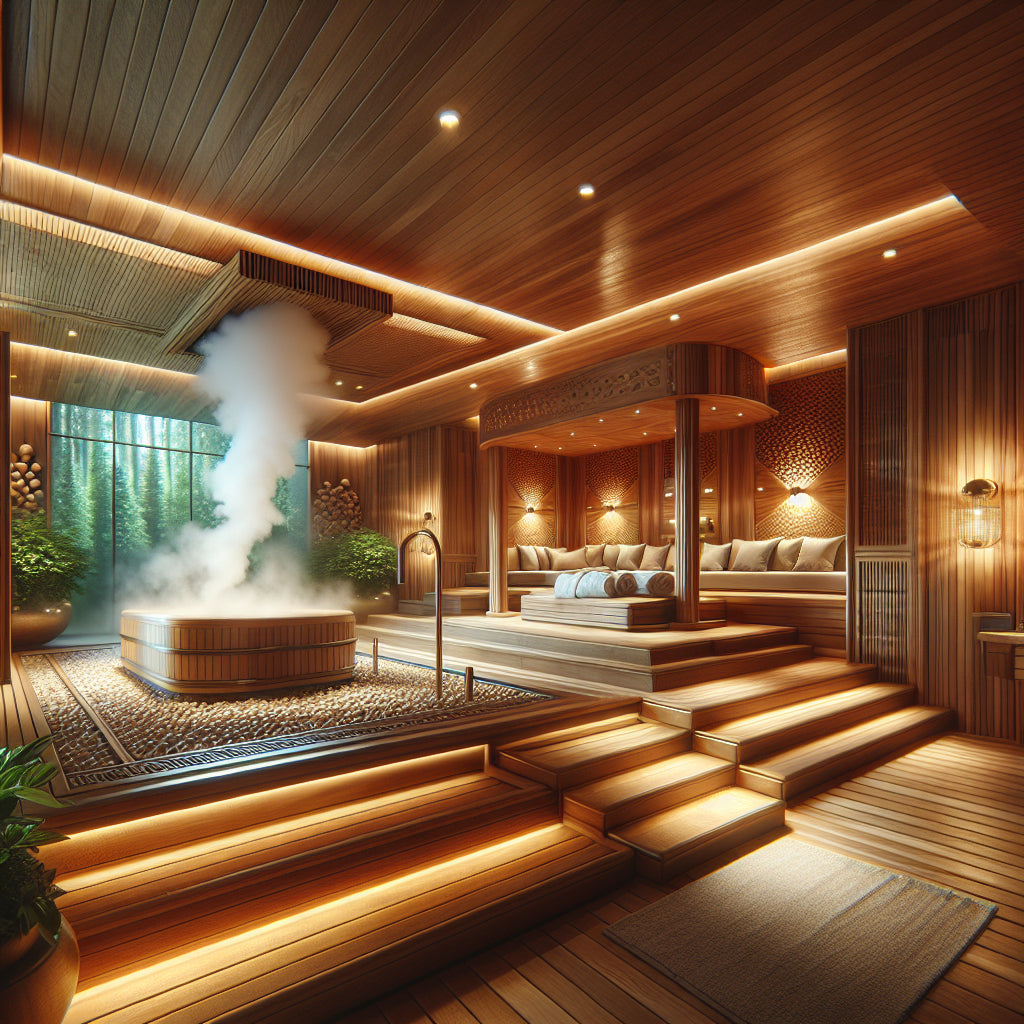Japanese Heat Therapy vs. Finnish Saunas: A Comparative Analysis
Heat therapy has long been a staple in various cultures, each with its distinct practices and philosophies. In Japan, the emphasis is often placed on holistic health and the therapeutic benefits of natural hot springs, or onsens. Conversely, Finland is renowned for its sauna culture, an integral part of daily life that promotes relaxation and social interaction. This article delves into the nuances of Japanese heat therapy and Finnish saunas, examining their health benefits, techniques, and cultural significance.
What Is Japanese Heat Therapy?
Japanese heat therapy primarily revolves around the use of onsens, which are natural hot springs that harness geothermal energy. In Japan, these springs are not only seen as a means of relaxation but also as a way to rejuvenate the body and mind. The practice dates back to ancient times, and its roots are deeply embedded in Japanese culture.
Onsens typically contain various minerals depending on the region, such as sulfur, sodium chloride, and carbon dioxide, each offering unique health benefits. For instance, sulfur is known to aid in skin conditions and respiratory issues, while sodium chloride can help with muscle relaxation and improving circulation. The experience of soaking in an onsen is often enhanced by the tranquil natural surroundings, promoting a meditative state.
How Does Finnish Sauna Culture Work?
The Finnish sauna is a hallmark of Finnish culture, deeply integrated into social life and wellness routines. Unlike onsens, Finnish saunas are often dry heat environments, traditionally heated by a wood-burning stove or an electric heater. Temperatures can reach between 70°C and 100°C (158°F and 212°F), with humidity levels that can be adjusted by pouring water over heated stones.
In Finland, saunas are considered a communal space where friends and family gather to relax and bond. The sauna experience often includes a ritualistic aspect, such as the use of birch branches for gentle whipping, known as "vihta," which enhances circulation and skin health. This cultural approach emphasizes not only physical relaxation but also emotional well-being.
What Are the Health Benefits of Each Method?
Health Benefits of Japanese Heat Therapy
- Detoxification: The heat from onsens helps to induce sweating, which aids in eliminating toxins from the body.
- Improved Circulation: The warmth promotes blood flow, enhancing oxygen and nutrient delivery to tissues.
- Muscle Relaxation: Soaking in hot springs can alleviate muscle tension and reduce pain, making it effective for those with chronic conditions.
- Stress Relief: The calming environment of an onsen encourages relaxation, reducing stress and anxiety levels.
Health Benefits of Finnish Saunas
- Cardiovascular Health: Regular sauna use has been linked to improved heart health, reducing the risk of cardiovascular diseases.
- Skin Health: The heat opens pores, promoting clearer skin and helping to alleviate conditions such as acne.
- Muscle Recovery: Athletes often use saunas post-exercise to aid recovery and reduce soreness.
- Enhanced Mood: Saunas can increase endorphin levels, contributing to improved mood and overall mental health.
What Techniques Are Used in Each Practice?
Japanese Techniques in Heat Therapy
In Japan, heat therapy is often complemented by practices such as shiatsu massage, which uses pressure points to relieve tension and enhance relaxation. Additionally, the concept of wabi-sabi, which embraces imperfection and transience, is reflected in the design of onsens, promoting a meditative experience.
Finnish Sauna Practices
Finnish saunas incorporate various rituals, including:
- Sauna Aufguss: A practice where water infused with essential oils is poured over hot stones, creating aromatic steam.
- Cooling Off: It is customary to cool down after sauna sessions, either by taking a cold shower or jumping into a lake, which invigorates the body.
- Socializing: The sauna is a space for conversation and connection, reinforcing communal bonds.
How Do Cultural Perspectives Shape These Practices?
The cultural significance of these heat therapies reflects broader societal values. In Japan, the onsen experience is often seen as a rite of passage and a way to reconnect with nature. The Japanese value harmony and balance, which is mirrored in the tranquil atmosphere of onsens.
On the other hand, in Finland, the sauna embodies a sense of equality and openness. It is a space where social hierarchies dissolve, and people from different walks of life can come together in a shared experience. This reflects the Finnish appreciation for community and connection.
How Can You Incorporate These Practices into Your Life?
Whether you are drawn to the serene experience of a Japanese onsen or the invigorating heat of a Finnish sauna, both practices offer valuable health benefits. Here are some actionable tips to integrate these therapies into your wellness routine:
- Find a Local Onsen or Sauna: Explore local options to experience the benefits firsthand. If you’re in a region with natural hot springs, consider visiting for a weekend getaway.
- Create a Home Sauna: Consider investing in a sauna for home use. Options include traditional saunas, infrared saunas, or even portable models.
- Incorporate Rituals: Embrace the rituals associated with each practice, such as using essential oils in your sauna or practicing mindfulness in an onsen.
- Stay Hydrated: Always remember to hydrate before and after your heat therapy sessions, as sweating can lead to dehydration.
FAQs
What is the primary difference between Japanese heat therapy and Finnish saunas?
The main difference lies in the environment and cultural practices. Japanese heat therapy focuses on natural hot springs (onsens) and holistic healing, while Finnish saunas emphasize dry heat and social interaction.
Are there specific health benefits unique to onsens?
Yes, onsens often contain minerals that can provide specific health benefits such as sulfur for skin conditions and sodium chloride for muscle relaxation.
Can I use essential oils in a Finnish sauna?
Absolutely! Using essential oils during the sauna experience can enhance relaxation and provide aromatic benefits. Just be sure to use oils that are safe for high temperatures.
How often should I use a sauna or onsen for health benefits?
For optimal health benefits, it is generally recommended to use a sauna or onsen 1-3 times per week, depending on your comfort level and health condition.
Is it safe for everyone to use saunas and onsens?
While most people can safely enjoy saunas and onsens, those with certain health conditions (such as cardiovascular issues or pregnancy) should consult a healthcare professional before use.
In Summary
Both Japanese heat therapy and Finnish saunas offer unique approaches to wellness, rooted in rich cultural traditions. By understanding their benefits and techniques, you can enrich your health practices and enjoy the profound relaxation they provide. Whether you prefer the tranquil experience of an onsen or the communal atmosphere of a sauna, these heat therapies can be transformative for your well-being.
If you're considering adding heat therapy to your life, explore our collection of saunas to find the perfect fit for your home.
Author Bio: A wellness enthusiast and expert in holistic health practices, dedicated to exploring and sharing the benefits of traditional therapies from around the world.
Take the sauna quiz find out which sauna is right for you
Take the 1-minute quiz to discover the perfect sauna for your lifestyle









Leave a comment
This site is protected by hCaptcha and the hCaptcha Privacy Policy and Terms of Service apply.